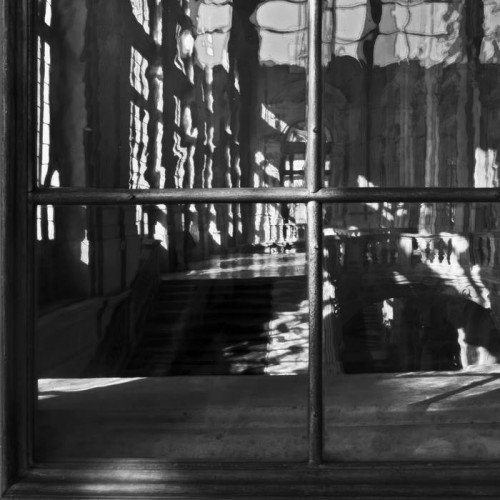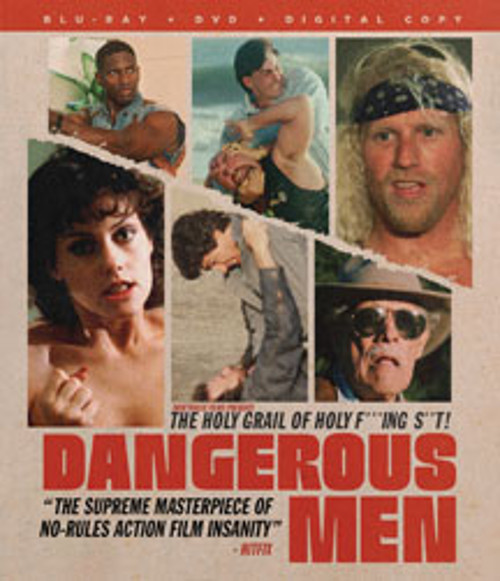Brandon LaBelle & Steve Roden – The Opening Of The Field
Label: Digital Narcis Format: CD
One theory holds that picking at scabs or otherwise excoriating the body = self-loathing. What about the pinching and pulling at strands of nature? A dwarfing talcum hum of lighthouse proportions whiles away the background. A gentle tapping at the glass – competition with the laser-bounced CD itself? Oh, that rubberband laser… the CD tray won’t open? Such recordings as these are truly ambient because they are heard in tenfold ways – and movement is the key which ultimately wards off rash pronunciations.
A tickle at the ear and there is wonderment yet again. Yes. Yes. Yes. I hear that. No. Again? Yes. Yes. No, and the purr and sparkle of the speaker cones is in full effect. The dog pricks up his ears as the strum of some other place emerges, fading into a faraway rotation. A low keening rubs against something rough in the dark. It cycles against cycles – gears in a hidden machine that runs alongside it, ending in the final demise of its time spent within another machine…
-David Cotner-
Labradford – E Luxo So
Label: Blast First Format: LP,CD
One of the most moving records from a group who have already produced a substantial body or hauntingly beautiful music, E Luxo So is Labradford at the peak of their skills in the examination of emotional and musical space and time. Hovering, almost intangible in its sensuous presence, this album holds time hostage in exchange for the release of unquiet spirits from the bleaker parts of existence. Now if that sounds unlikely or overblown, try witnessing these pieces in the hush of a cavernous chapel in a thunderstorm, as happened as part of Labraford’s Second Festival of Drifting earlier this year. While the record isn’t usually going to achieve the magical stillness of that occasion too often (given that summoning thunder and lightning tends to be a little difficult for mere mortals), it wouldn’t be too surprising to find the group had laid it all on especially.
E Luxo So is also just about the best record in a long, long time for quiet contemplation of the universe, calming down from heightened emotional estate, or coming down off some kind of chemical experience too no doubt. Chilled? Not really – that was their self-titled album of a few years back – this is far more warm, gently enfolding and comforting with the wonder of creation, as each piece slips softly up the scale to peaks of hypnotic, deeply fulfilling bliss – is this an exaggeration? Maybe, but it works out like that sometimes, and for all the moments of doubt, claustraphobia, anger or sadness the world has to offer, there is a soothing balm to be found here.
As for what the record sounds like, Labradford make perfect use of slowly-unfolding pianos, violas and synthesisers, samplers, percussion and dulcimers and even the odd guitar maybe. The highlight comes with Track 5 (the titles on the booklet are in fact the credits…), a cycling, slow composion based around a bass guitar figure, underpinned by subtly echoed, minimal sample-generated percussion, and a gorgeous, almost pedal-steel motif which strikes deep chords of longing, even attenuated anguish as it fades across the strings. So good it’s almost enough to summon tears of joy and pain at the same time, E Luxo So is nearly perfect in its stillness.
-Tango-Mango-
Laika – Bad Times
Label: Too Pure Format: CDS,7″
Clever old Laika managed to release this single just while the world was confounded by the Love Bug Worm (or at least that section of the world which chooses to use Micro$oft Outlook as it’s window on the virtual world anyhow). Taking the lyrics from the Bad Times virus hoax pastiche last seen circulating around 1998 and adapting them extensively to her own ends, Margaret Fielder delivers them in her usual laconic drawl, making the warning both humorous and somewhat wry along the way. Which is about right, considering the irritating number of such (unintentionally funny) hoaxes clogging up the email inboxes of anyone online, forwarded hither thither and yon by the otherwise well-meaning Net denizens who believe evything they’re sent about a virus.
Back to the music – “Bad Times” the song is a compulsive shuffler of a track, instantly groovy, scratching, brushing, shifting, and ever so treacly in its meander from start to finish. Terrific stuff. Extra tracks on the single include the swooping, blooping whispery skank of “He Knows” and the urgent chickawacka strum of “Longwave”, which is particularly redolent of their earliest material on Silver Apples Of The Mooon, but refined into a squarky guitar melody and some fine sideways rhythms and subtle electric organ swoops. All three tracks show that Laika are at a high point, cropping along on the crest of a funky little groove and some seriously intense percussion skews.
-Linus Tossio-
Laika – Good Looking Blues
Label: Too Pure Format: CD,LP
 And they are – and Lilly loves Laika! I first saw Laika play Los Angeles around 1994 in some club or another, persuaded to go though I knew I wouldn’t like it from the description given. Something about Electronica from somewhere else. Their name was good (the first dog in space), but other than that I don’t recall much. What a pleasure then to listen to their new release Good Looking Blues and be so impressed.
And they are – and Lilly loves Laika! I first saw Laika play Los Angeles around 1994 in some club or another, persuaded to go though I knew I wouldn’t like it from the description given. Something about Electronica from somewhere else. Their name was good (the first dog in space), but other than that I don’t recall much. What a pleasure then to listen to their new release Good Looking Blues and be so impressed.
The spacey Electronica is still there, but not alone as so many bands like to leave it now. Joined with Blues-style lyrics, enough horn noise to bring up the Jazz word, and power-stretching strings, this release sees Laika into a maturity of music that may just get them some mainstream attention. I don’t think they’ve lost their edge on this trip to mainland, and I hope they won’t be affected once they arrive, but it is undoubtable that this ever-so listenable collection will bring them to the forefront of a very stale music for the masses world.
There is an intrinsically feminist curve on the lyrics, with more than one song delineating the woes of women, and the allegdly inherent meaness of men. Whether this is Margaret Fielder‘s feeling or just makes for good Blues songs, one may not know. Whatever the case, Margaret’s voice is comforting and beautiful, sultry with its warnings and quick to bitterness. She makes having the blues attractive in a way not often heard since 1940s, without immitating the divas of old. Musically most of the tracks are quick and sharp with clear percussion and a sway towards very modern HipHop. The electronics are softly behind everything else so that there is a consistent dance theme on top of hypnotic melodies. Also at the forefront are trumpets and flutes so that it all stays in a semi-organic range of real instrumentations. There are so many styles and efforts mixed here, from the weird Moog sounds to the clever Funk bass lines, that this project could have easily gone haywire. Instead, it remains and stands clear and slick and composed. Indeed it may be this very cleaness which could induce the mainstream to accept Laika; it is music most can get their heads around.
True to the title, Good Looking Blues does weirdly make the Blues seem good. With tracks too fast to inspire a lot of melancholy, and even a sense of humour, this is no forlorn love-haunt. GLB is fun, and sweet, and professional. Makes a great gift for the recently broken-hearted, as it is sympathetic, but energizing at the same time. Laika are back, sleeker than ever.
-Lilly Novak-
Laika – Uneasy
Label: Too Pure Format: CDS,12″
 Still as slyly groovy as ever, Laika are back with enough change in method and style to make things interesting, and so much the same to keep the faithful on side. “Uneasy” is one of the regretfully reflective songs Margaret Fielder writes so well, scrawled over with sweeping electronics and riding on a rolling sample and live kit rhythm which has become Lou Ciccotelli‘s trademark.
Still as slyly groovy as ever, Laika are back with enough change in method and style to make things interesting, and so much the same to keep the faithful on side. “Uneasy” is one of the regretfully reflective songs Margaret Fielder writes so well, scrawled over with sweeping electronics and riding on a rolling sample and live kit rhythm which has become Lou Ciccotelli‘s trademark.
“Lie Low” is what TripHop should really sound like, chugging Electro drum-machinery ticking away while Guy Fixsen and Fielder attend to the vibey melodies, and the lyrics keep up the dreamlike emotional searching without making the guts churn trying to digest anything too re-processed. Instead, the machines and other instruments get along quite nicely thank you, and everything works well, pleasantly even. Add in a glittery hologrammatic cover, that effervescent rainy-piano keyboard and sussurating percussion sound with Dub-aware bass support, and all is as it should be from a band who maybe have been shot into space as an experiment after all.
-Antron S. Meister-
Anita Lane – Sex O’Clock
Label: Mute Format: CD
 Sex O’Clock is the latest opus from Anita Lane, co-writer of such Birthday Party favourites as “A Dead Song”, “Kiss Me Black”, and “Dead Joe”, and Bad Seeds numbers such as “From Her To Eternity” and “Stranger Than Kindness”. Along with her long standing collaborator Bad Seed Mick Harvey, she has produced slow, sexual and brooding album from the darker side of Soul.
Sex O’Clock is the latest opus from Anita Lane, co-writer of such Birthday Party favourites as “A Dead Song”, “Kiss Me Black”, and “Dead Joe”, and Bad Seeds numbers such as “From Her To Eternity” and “Stranger Than Kindness”. Along with her long standing collaborator Bad Seed Mick Harvey, she has produced slow, sexual and brooding album from the darker side of Soul.
Anita Lane moans bittersweet lyrics on top of a rich musical background that at times suggests Motown or the string driven Disco nights of the 70s. Sex O’Clock moves from the slick grooves of “Do That Thing” and “Like Caesar Needs A Brutus” to hammond drenched tracks like the pained “I Hate Myself”. There are similarities between Sex O’Clock and the sound of the Bad Seeds and Barry Adamson‘s solo work. This is hardly suprising when you consider that Lane is part of the same musical community and a significant contributor to these projects. The music is stamped with her individuality, experiences, memories, and musical ideas.
-snowG3-
Jean-François Laporte – Mantra
Label: Metamkine Format: CD
TTe hiss and everpresent drone work at differing ends to reach the same end – that of 21 minutes and 58 seconds. A sizzle and whirr and it seems as if a film is being played – a global phenomenon, that, because just try to find a place on the planet where you cannot hear a motor. There is much elevation and passing of sounds from one speaker to the next and so on. The whirr thins itself, edging into treble, whilst the little brother drone keeps on keepin’ on. At what point does a background become a foreground? In this case – it is unclear. But a mantra can be something held close to the heart or worn on the sleeve – depending on which discipline one comes from.
Subtlely, different voices from the choir are heard – at differing times for varying lengths of that time. However, these are the voices that one hears when a minor decision, creating a major impact, is made. Much subtlety. Metal tendrils reach out from beneath the organ to feel along the kerbs of the pews – there is movement, and then there are movements. In more ways than one. The tendrils curl themselves into swivels, and then small bells – a rolling thing, egged on by wind from speaker to speaker. The end?
-David Cotner-
Larvae – Empire
Label: Ad Noiseam Format: 12″
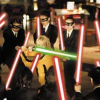 Taking a lifetime of Star Wars fandom as a starting point, Matthew Jeanes‘ Empire becomes a kind of concept EP on the theme of the films, Drum And Bass style. With a sleeve which takes every possible opportunity for pastiche, from the design details, Enduser action figure (!) to the playful swapping of the katanas of Kill Bill for lightsabres on the front, there is at the very least a sense of wicked humour at work on this release.
Taking a lifetime of Star Wars fandom as a starting point, Matthew Jeanes‘ Empire becomes a kind of concept EP on the theme of the films, Drum And Bass style. With a sleeve which takes every possible opportunity for pastiche, from the design details, Enduser action figure (!) to the playful swapping of the katanas of Kill Bill for lightsabres on the front, there is at the very least a sense of wicked humour at work on this release.
Naturally, there is a Dark Side, and a Light Side to the vinyl. The former holds three tracks, each referring to Star Wars or its theme. “Hayden’s Ghost” and “Solo Shoots First” are straightforward pieces of highly skilled Dancehall-inflected breakbeats, rippling with scurrying FX while avoiding the obvious (and copyright issues coming from the) use of samples from the series. Methodical and thoughtful rather than particularly dancefloor mashup-oriented, they set the scene for a slow-burning “Sith Witch” which allows for more distortion to enter the sound palette, stepping up to a mechanized beat and whirling in some urgent rhythms to make the Dark Side groan with the pressure.
The Light Side finds the title track creating an optimistic storm of low end and frenetic beats to accompany what sounds like samples from a Star Wars audio book, though perhaps the references to listening to R2D2 are perhaps once again held off from being literal by the likelihood of legal action over uncleared samples. Though the cheesy bleep version of the “Imperial March” and the orchestral samples thereof might well be soundalikes rather than direct lifts, in either case, the clash of cinematic themes with rattly breaks and lo-fi bleeping is never entirely effective. Enduser turns up the brighness levels for his “Empire” remix, which comes on full force for the ecstatic rush of bass tears and high-pitched frippery, making his the most upbeat contribution to the EP, especially as the string samples sound more integrated into the whole track. Despite its placement on the Light Side, labelmate Bong-Ra remixes “Hayden’s Ghost” to a shivery new template, spicing up the bass and flanging the beats while inserting hissing dialogue snippets for a more floor friendly version which is also somehow even doomier.
-Linus Tossio-
Larvae – Monster Music
Label: Ad Noiseam Format: CDS
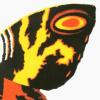 With tracks inspired by the classic Japanese monster movies, Monster Music provides two kicking tracks and a pair of more laid back bassiness. “Mothra” surges with haunting choral samples from the character’s theme song, a frantic pace being set between in clattery Drum and Bass spasms, thudding percussion welling up into multi-layered breakbeats in replication of the destruction wrought on Tokyo every time a new Gojira film was released. Fortunately, Larvae don’t seem to be dressed in unconvincing rubber suits – though perhaps it could be a good stage act? Saurian co-star “Ghidrah” stumbles forward on a swirl of low end churn, stepping up the breakbeat pressure into a frenzy of tearing rinses and halting scrawls as the demolition continues.
With tracks inspired by the classic Japanese monster movies, Monster Music provides two kicking tracks and a pair of more laid back bassiness. “Mothra” surges with haunting choral samples from the character’s theme song, a frantic pace being set between in clattery Drum and Bass spasms, thudding percussion welling up into multi-layered breakbeats in replication of the destruction wrought on Tokyo every time a new Gojira film was released. Fortunately, Larvae don’t seem to be dressed in unconvincing rubber suits – though perhaps it could be a good stage act? Saurian co-star “Ghidrah” stumbles forward on a swirl of low end churn, stepping up the breakbeat pressure into a frenzy of tearing rinses and halting scrawls as the demolition continues.
“Mecha” lumbers with ominous dubs and tick cycles, the mood taken down a notch or two back towards Industrial HipHop instrumentalism to match its robot inspiration, rhythms clanging off crunchy loops with s definite path being beaten into Illbient territory. Likewise with the slowed down remix by Mothboy and Dustmite of “Mothra”, the vocal samples of the giant moth’s diminuitive female controllers chiming in and out of nothingness on a bed of stamping monster foot bass. A little melody and a twinkling music box make for a lighter counterpoint to the weighty rhythms, concluding the EP in echoing salute to the genre.
-Freq1C-
Bill Laswell – Dub Chamber 3
Label: ROIR Format: CD
 Bill Laswell keeps on working at the soundcape potential of Dub, here bringing in one of ECM‘s noted Jazz luminaries in the shape of Nils Petter Molvaer and his trumpet processing, plus old chums Nicky Skopelitis and Jah Wobble on bass and guitar respectively. Add in Talvin Singh associate Karsh Kale‘s tablas and keyboards by Craig Taborn from Innerzone Orchestra, and it’s all-star superduboutgroup time again.
Bill Laswell keeps on working at the soundcape potential of Dub, here bringing in one of ECM‘s noted Jazz luminaries in the shape of Nils Petter Molvaer and his trumpet processing, plus old chums Nicky Skopelitis and Jah Wobble on bass and guitar respectively. Add in Talvin Singh associate Karsh Kale‘s tablas and keyboards by Craig Taborn from Innerzone Orchestra, and it’s all-star superduboutgroup time again.
Some of Laswell’s projects have a hit and miss feel to them, but this third excursion into the Dub Chamber has plenty of fine playing on its four tracks. Opener “Beyond The Zero” is a mellow groove, exuding warm bass and some nifty tabla work offset by the extremely mellow trumpet ooze from Molvaer. Things start to get a little more motion to them on “Cybotron” – funky drum licks and beats, skanking keyboards and a forest of echoes complement Wobble and Laswell’s swelling bass largesse and Skopeletis’ liquid guitar. So far, so ambient groove, and all lopingly easy enough with the appropriate dub disorentation tactics of drop and crossfade on hand.
“Devil Syndrome” takes a little more getting used to, thanks to its Acid Jazz noodling vibe among the somewhat too involved breakbeats and the summer-picnic electric piano. All a bit too much on the Fusion side of the fence, but that bass keeps on rumbling along in a way that Jaco Patorius probably never really used in quite the same way. Lots of flanging and phasing makes it all a spacious enougn experiement though, and the resolution into a more relaxed middle and the slow-motion beats in the Funky-Isolationist close makes for a semi-satisfying whole.
The eighteen-minute “A Screaming Comes Across The Sky” takes its own sweet time getting going on a gentle wash of chorus and echo effects as Skopeletis, Taborn and Laswell make for the stars in a self-contained studio of seemingly expansible proportions. Together they shapeshift the tune into a harder, more Reggae-based section which marks the psychedelic fulcrum of the album before slipping away into a digital fade. Like the album as a whole, this track makes the cross-pollination of genres and forms seem effortless, and while not without its occasional chin-stoking moments, Dub Chamber 3 is about as comfortable and familiar as a nice warm overcoat, wooly hat and spliff by the fire in the autumn.
-Antron S. Meister-
Bill Laswell – Dub Chamber 4 – Sacred System: Book Of Exit
Label: ROIR Format: CD,LP
 Backed up by the tabla and percussion talents of Karsh Kale and Aiyb Dieng and under the production and bass supervision of Bill Lawell, Book Of Exit provides a showcase for the superb voice of Ethiopian singer Ejigayehu Shibabaw, AKA GiGi. What a voice it is too – GiGi hits the highs from the outset of “Ethiopia”, holding perfect notes for just the right amount of time, sonorous and simple.
Backed up by the tabla and percussion talents of Karsh Kale and Aiyb Dieng and under the production and bass supervision of Bill Lawell, Book Of Exit provides a showcase for the superb voice of Ethiopian singer Ejigayehu Shibabaw, AKA GiGi. What a voice it is too – GiGi hits the highs from the outset of “Ethiopia”, holding perfect notes for just the right amount of time, sonorous and simple.
This initial lack of affectedness or pose helps steer the album from the comfortable pitfalls of the fusions of the so-called Fourth World – for the most part. While the touch on the Dub controls Laswell excercises is fairly lightweight, his handling of the echoes and curling rhythms on the three melodica-led instrumentals “The Lower Ground”, the creaking bass nodder “Shashamani” and slow motion ambient bass/drum workout “Land Of Look Behind” drift past easily and rather pleasantly too. There are few real surprises here in the musical department – tablas and other percussive instruments ripple and pulse with liquidity, the effects boxes hit the right combination of flow and depth, and everything feels right (if perhaps over-familiar) about each tune under spell woven by the low-end vibrations of Laswell.
However, with GiGi singing, the extra emotional content her words and their delivery brings lift proceedings to a new level of calmly-grooving deftness on the first two songs. Again, the application of effects to her voice is sparing and all the better for this; the uptempo digital Dub of “Bati” chugs propulsivley to itself while the reflective sound of a woman conversing in a timeless mode swells and ebbs to the easily-digested Reggae pulse. She opts to sing in English for the sorrowful “Jerusalem” (which is perhaps unfortunately not a version of William Blake‘s poem), and this is also where matters become weighed down with the baggage of vocal tremelo and coffee-shop tugging at the heart strings for the plight of a city and peoples undoubtedly in agony. While the sentiments are entirely laudable, there is something of an over-glossed sheen to the production which distracts from the melancholia and instead regresses into averagely bland sentimentalism.
This disappointment apart, Book Of Exit is a supremely relaxed album able on occasion to engage directly with the listener’s emotions, and it’s very easy to forgive the stray moments of excess smoothness for that reason too.
-Linus Tossio-
Laub – Filesharing
Label: Kitty-Yo Format: CD
I usually look forward to anything I receive from this label and Filesharing is no exception. The Berlin duo of Antye Grele-Fuchs and Jotka create shifting Ambient textures amid which a delicate, pure Pop voice drifts and whispers. They create some minimal backdrops that show the term can mean restraint and knowing when to leave spaces. They also weave compelling and haunting images – and I have no idea what the words mean – of European nights, cities where streets will lead to unexpected locations and encounters.
But I think what I find most appealing is the ‘human’ quality of the music. It may be electronically based but there is some warmth at its heart. The first track, “Mofa” is a suitable example. Even one of the coldest tracks, “Getriebe” has a tense, breathless atmosphere that lends it an urgency. The voice is so vulnerable and fragile that it arrests the attention and the music so entirely ‘right’ that I find myself drawn into these entirely fictive scenarios. But I’ll reserve the details for my analyst.
“Morgen” too has an urgency as the voice hurries through its narrative against some droning and fragmentary of use beats. As it draws to an end the abstraction comes to the fore but it isn’t jarring or out of place. On “Fadenseiden” there is an air of menace that oddly recalled some of Beth Gibbons‘ work in Portishead, just a tangential glimpse at another music that is human and emotional, perhaps. It isn’t an “easy listening” experience despite the Pop elements but it is one that draws me back.
-Paul Donnelly-
Laub – Kopflastig
Label: Kitty Yo Format: CD
Built on a foundation of complex percussion patterns and minutely layered sequences of electronics and processed guitar, Laub multitrack singer/programmer Antye Grele-Fuchs‘s apparently (they’re in German) highly personal lyrics across themselves to multidimensional effect. If comparisons with Björk have been made (and they have), then there are in fact some similarities of attitude and delivery – but also no sense of mere copyism either. Laub have their own unsettling style, far less populist or danceable, though on occasions equally as prone to bypassing interest in favour of caprice.
Sometimes the sequences and the vocals just don’t mesh, as when the sound of individual keys triggering samples becomes obvious on “Himmelblauer” for example; but generally Kopflastig (“Nose-heavy?” ) is an intriguing, if obscure, record. Then again, the very lack of immediate surface gloss or easy references is – as with someone equally unique as say, Phew– means that the intricate detail and care with which Antye and Jotka arrange their sub-D & B sequences and estranged sound samples into something other than standard format invites a process of in-depth appreciation, if not immediate gratification. Now that can only be a good idea.
-Freq1C-
Ed Lawes – 14 Tracks/Pieces
Label: Planet Mu Format: CD
 The title of this new release on Planet Mu is 14 Tracks/Pieces, which seems to capture the tension present between contemporary electronica and serious academic musicology quite nicely. Lawes‘ sketchy liner notes refer to serialism, Free Jazz, Electroacoustic techniques, Bach and more, and there is no doubt that he is an accomplished multi-instrumentalist, contributing improvised and scored performances on the double bass, clarinet, trumpet, singing bowl and drumkit, to name but a few. However, he avoids classical virtuosity and improv-Jazz verbosity in favour of minimalist sound generation, often playing his instruments in unconventional ways – rusty violin strings and bowed cymbals – and taking the resulting drones and phrases into the digital domain for manipulation and arrangement. The result is a series of atonal sound sculptures if you like that sort of thing, sometimes hypnotic and sometimes glitchy, and probably a dissonant mess if you don’t.
The title of this new release on Planet Mu is 14 Tracks/Pieces, which seems to capture the tension present between contemporary electronica and serious academic musicology quite nicely. Lawes‘ sketchy liner notes refer to serialism, Free Jazz, Electroacoustic techniques, Bach and more, and there is no doubt that he is an accomplished multi-instrumentalist, contributing improvised and scored performances on the double bass, clarinet, trumpet, singing bowl and drumkit, to name but a few. However, he avoids classical virtuosity and improv-Jazz verbosity in favour of minimalist sound generation, often playing his instruments in unconventional ways – rusty violin strings and bowed cymbals – and taking the resulting drones and phrases into the digital domain for manipulation and arrangement. The result is a series of atonal sound sculptures if you like that sort of thing, sometimes hypnotic and sometimes glitchy, and probably a dissonant mess if you don’t.
The acoustic elements are more obvious on some tracks than others, with a sporadic orchestral sensibility on display, albeit with the instruments pitch-shifted into unfamiliar registers, filtered into unusual timbres or detuned relative to each other. Sometimes, for example on “Bowed/Caused”, a staccato electroacoustic playfulness reminiscent of Roger Doyle makes itself known, coming across as whimsical while still maintaining an eerie edge. At other times, you can hear the influence of the breakbeat (“Actually Real”) or even Industrial (“Brief Junk”) worlds. Closing track “Four Changes On Non-Themes” on the other hand consists of an affectionate pastiche of a Jazz band.
Despite this variety of influences, and the fact that the pieces span three years of writing and recording, there is not as much variation in terms of sound and texture as you might expect. Unearthly harmonics, digital clipping and the fluttering ‘beat’ cycles generated by the microtonal interplay of detuned waveforms provide the common threads. There is something about Lawes’ production process that seems to homogenise the sound sources and give them all a slightly raspy, distorted edge similar to the overdriven squareness of Oval‘s macro-granules. Combined with his doggedly atonal compositional approach, this does make the whole thing somewhat tiring listening, such that the occasional moments of conventional harmony (“An Ordered Set”) and traditional scales (“Tone”) come as something of a relief. That in itself is not a problem if experimentalism is your bag, but this is not music for entertainment.
-Andrew Clegg-
Legendary Pink Dots – Farewell Milky Way
Label: Cacciocavallo Format: CD
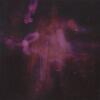 The Melkweg (Milky Way) club in Amsterdam played host to the Legendary Pink Dots every year for ten years until 1994 when this live recording was made – for some reason they’ve not returned as their popularity in their (part-)adopted homeland has dropped while their ever-expanding web presence has supplanted their former solid Dutch fanbase. Radio VPRO featured the band regularly on their radio show, and it was via that station that Farewell Milky Way was originally transmitted.
The Melkweg (Milky Way) club in Amsterdam played host to the Legendary Pink Dots every year for ten years until 1994 when this live recording was made – for some reason they’ve not returned as their popularity in their (part-)adopted homeland has dropped while their ever-expanding web presence has supplanted their former solid Dutch fanbase. Radio VPRO featured the band regularly on their radio show, and it was via that station that Farewell Milky Way was originally transmitted.
Much of the material here is drawn from the then-current album 9 Lives To Wonder, a record which constitutes one of the group’s most fully rounded releases (of many, it must be said), and incidentally with the recently restored line-up which includes Martijn de Kleer on guitar and drums and then-newcomer Ryan Moore at the drum and bass controls. The Dots on top form are one of the tightest live bands around, and this is captured to perfection on this CD by Hans Meijer and their resident sound wizard Raymond Steeg – a credit which is well deserved thanks to the crystalline sound quality and mixing. Listen to this one on headphones for the full sensurround experience of a group who fill the sound spectrum to hallucinatory, emotive and occasionally disturbing effect, especially on the ominously pulsing “City Of Needles” with its “There can be no survivors” sample among the clanging bells and squirming synths as Edward Ka-Spel predicts “You’ll meet your fear, and find it’s so much bigger than you feared” – truly among the most effectively disturbingly lysergic musical experiences, complete with “Red-hot pokers in the eyes” and a rising Electro-psychedelic creschendo of motorik drumming, soaring guitars and synths.
One of the many highlights of a LPD gig is when “9 Shades To The Circle” is included in the set, as Ka-Spel invariably takes the opportunity to improvise a new story each night on the basic structure laid down by his and The Silverman‘s sample and keyboard structures. Milky Way‘s tale is one of the weirder ones – and that’s no mean feat at all – concerning nuclear explosions, downhill skiing nuns and the secret of what tiny frogs really do when hopping about the countryside (it involves inaudible whistling). Add in the porno-morality song “Love In A Plain Brown Envelope”, complete with Niels van Hornblower’s rolling, honking saxophones with those mysterious antelopes of Lappland, a moving take on “Bella Donna” and a refreshing slice of optimistic encouragement to higher endeavours in the face of bitter disappoinment in the shape of an extended “Space Captain” for the enlivening finale and it’s just about the finest live recording of the Dots there is.
-Antron S. Meister-
Legendary Pink Dots – Live At La Luna
Label: Soleilmoon(North America)/Staalplaat (Europe) Format: VHS (NTSC & PAL) Video
Recorded in Portland, Oregon during their 1997 US tour, Live at La Luna is the first professional concert recording the band has issued in their eighteen year career. Drawn largely form the most recent studio album Hallway of the Gods the opening songs build the atmosphere slowly, showing the Dots’ as the veterans of live performance that they are. Edward Ka-Spel’s stage presence is as rivetting as ever, delivering the lyrics with assurance in his accustomed part-edgy, part-conversational manner. Equally, the brief antics of bassist Ryan Moore raise a chuckle in the closing shenanigans of “On High”, wiggling off behind the drum kit as Ka-Spel and The Silverman (ensconced in fairy-lit synth zone) exchange keyboard discordances.
After building the tempo through an impassioned “Spike”, with the double-saxophone exertions of Nils van Hoornblower making their first appearance of the night, the band stretch an old favourite “Love in a Plain Brown Envelope” into unusual shapes, with guitarist Atwyn adding a space rock feel, which also results in a rather unnecessarily long and soaring guitar solo. Hoornblower shows his virtuosity with wind instruments by switching to flute for “Destined to Repeat,” looking all the while like a bizarre mix of both Sun Ra and Phillip Larkin. A sedately mellow “Harvest Babies” segues through a keyboard duet into “Velvet Resurrection”, an the real fun starts as the sample loops kick in, backed up by the energetic drumming and psychedelic electronics. Drawing as much ennui out of the song’s bitter longing for equable teleological certainty as he can, Ka-Spel begins his slow but sure expansion into a worryingly deranged, wholly captivating performance.
Ka-Spel has the unnerving charisma of a cult leader, an attribute which he brings with gusto to the live Dots experience. By turns reasonable and demented, he acts out stories, prophecies, passion plays and goes through an emotional wringer as the band provide the appropriately mind-expanding musical backdrop. As with the best theatrical shows, the Dots live are an entrancing proposition, and despite the plain camerawork and editing, Live at La Luna captures something of the surge of energy they release on stage. When the lights go red and the samples of laughter almost unbearable as “Hellsville” emerges from the sonic residue, even the noticable reduction in the sound quality is forgotten in the sheer rush of recognition of one of the band’s most powerful pieces. Bells clatter demonically, the laughter fades in and out of a swirling backdrop and the increasingly messianic figure of Ka-Spel mesmerises with his almost palpable immersion in a journey through personal hell. When the finale of “City of Needles” emerges, complete with new lyrics from the perspective of a too-reasonably suicidal Heavens’ Gate member, the near-insanity summoned is terrific, almost overwhelming in its conviction.
Whatever the merits of this particular performance, the lack of several favourite tracks apparently cut from the video, the mediocre (and mono) sound quality, editing and production values, this is a tremendous record of the Dots at a particular time. For an almost metaphysical sense of the imaginiative impact of the coming Millenium – and possible accompanying apocalypse – there is nothing like this band, in concert or on record. Those lucky enough to have witnessed one of the truly great live bands on the planet will recognise the sensation of absorbing, engrossing connection, while those who have yet to experience the full force of a truly psychedelic group will at least have had a taste of what is yet to come.
– Antron S. Meister –
Legendary Pink Dots – Live At The Metro
Label: SPV Poland Format: CD
– Poi Poka Mozhash’
Label: Brudenia Format: CD
 Recorded during the Pink Dots‘ triumphant 1998 US tour at The Metro, Chicago, this first live album release in over a decade showcases their current setlist and sound very nicely indeed, even though the sound quality can be a little murky in places. Once the songs really kick in though, the sheer power the Dots produce live shines through, capturing the cosmic nature of their peformances very well indeed. A crowd favourite is the pounding “Aarzhlahh Olgevezh” from the Eighties album Curse, which is updated in Nineties Space-Rock style, expanding a secret-language tale of introverted self-obsession into a groovy little dance tune, with Niels van Hoornblower‘s sax and reeds adding further dimensions.
Recorded during the Pink Dots‘ triumphant 1998 US tour at The Metro, Chicago, this first live album release in over a decade showcases their current setlist and sound very nicely indeed, even though the sound quality can be a little murky in places. Once the songs really kick in though, the sheer power the Dots produce live shines through, capturing the cosmic nature of their peformances very well indeed. A crowd favourite is the pounding “Aarzhlahh Olgevezh” from the Eighties album Curse, which is updated in Nineties Space-Rock style, expanding a secret-language tale of introverted self-obsession into a groovy little dance tune, with Niels van Hoornblower‘s sax and reeds adding further dimensions.
Other classics updated are “Green Gang” and “Grain Kings”, the former assuming a new, langorous aspect with Edwin van Trippenhof‘s sinuous guitar work overlaying the tabla samples and enhanced screeches from Edward Ka-Spel – though “Grain Kings”‘ recording quality gets a bit ropey, spoiling an otherwise tremendous version of the quintessential LPD headtrip song. The remained of the set is drawn from recent years, with “Zoo”‘s story of alien captivity and unrequited love/lust, and the movingly melancholic “Fate’s Faithful Punchline” being particularly well-developed as live songs, with The Silverman‘s electronics squittering and weaving analogue synth trills and arpeggiations around the mix, in collaboration with Hoornblower’s wind-synth extemporisations. Ka-Spel also gets in a nifty anti-M**D**alds rant as part of the spoken intro to “Saucers Over Chicago” (a track which always surpasses the album version live), threatening a dire revenge from vegetarian space travellers on the meat-eating heathens of Earth.
While the live sound is necessarily often far more Rock-oriented than typical LPD studio recordings, the energetic numbers such as “Saucers” or the previously-unheard “Pain Bubbles” (a dark little epic) really come into their own here, and the album concludes with a storming version of their current show-stopper “Andromeda”, possibly one of the finest Space-related songs ever devised. Essential for all hardcore Dots fans, Live At The Metro makes up for its sometimes gritty sound with the sheer quality of the material on offer.
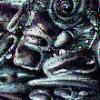 Poi Poka Mozhash’ is of course Russian for Sing While You May; as with the Canta Mietras Puedas compilation, this was drawn together to accompany a tour, though here it’s of Russia rather than the USA. However, this is neither a re-hash of Canta nor limited to the live shows, but is also available as a general release, and packaged in marvellous wrap-around, hand-drawn psychedelic art, with Cyrillic-lettered titles in one of the finest LPD sleeves of recent years. The tracks are a kind of greatest hits, but since the Dots have a huge catalogue of potential songs for inclusion, the is also still plenty of scope for further polyglot SWYM releases. Most are fairly recent, from the last twelve years or so, and including such perfect vignettes as the karma-weary “Zero Zero” and the magnificent tale of loss which is “Lisa’s Separation”.
Poi Poka Mozhash’ is of course Russian for Sing While You May; as with the Canta Mietras Puedas compilation, this was drawn together to accompany a tour, though here it’s of Russia rather than the USA. However, this is neither a re-hash of Canta nor limited to the live shows, but is also available as a general release, and packaged in marvellous wrap-around, hand-drawn psychedelic art, with Cyrillic-lettered titles in one of the finest LPD sleeves of recent years. The tracks are a kind of greatest hits, but since the Dots have a huge catalogue of potential songs for inclusion, the is also still plenty of scope for further polyglot SWYM releases. Most are fairly recent, from the last twelve years or so, and including such perfect vignettes as the karma-weary “Zero Zero” and the magnificent tale of loss which is “Lisa’s Separation”.
There are also three unreleased tracks, one a lengthy “Supper At J’s (Version 1)” which spreads ever-flickering tendrils of delay and spliced loops around a dissipating story fragment before lifting off into vocal-effects intensity, the others consisting of the wryly-titled “Interflora Overdrive (Parts 1 & 2)”, which make for a nice close to the album, fading out in a shambling jam which picks up into a couple of pleasant grooves, the second the more spacious of the pair. As an introduction to the Dots’ very special sound, Poi Poka Mozhash’ will more than suffice; and once bitten, is quite likely to lead to discovery of their dizzying selection of albums in those unfamiliar with this most remarkable of groups.
-Antron S. Meister-
Legendary Pink Dots – Nemesis Online
Label: Soleilmoon (North America) , Staalplaat (Europe) Format: CD, limited 2LP
Counting down to the decade’s end, the Pink Dots have surpassed themselves – again. Nemesis Online is perhaps their most completely satisfying record since the wondrous 9 Lives to Wonder of 1994 vintage. Certainly the interim album releases From Here You’ll Watch The World Go By, Hallway Of The Gods (and also the most recent Tear Garden collaboration with Skinny Puppy/Download) had their moments of excellence, but it’s here that the fully- rounded feel of a classic manifests.
The group are at their collective best when each element individual members bring combine across the spectrum into a series of thoroughly worked-through ideas. There’s the typical eclectic sources filtered through the playful Dots musical worldview – the cod-lounge score of “Jasz”; the breakbeat run-through of “Abracadabra”, the gentle lullaby melody of the closing “Slaapliedje” – but what shines in particular is the tight cohesion of a band who seem to spend half their career on tour or in the studio, with a dizzying array of solo projects and collaborations in which to excercise their individual proclivities. What results is a constant flow of ideas working off each other in a dialectical cycle of ideas, motifs and (sometimes self)quotations, evolved into a sequence of songs each of which fits the whole picture as a piece contributing more than the sum of occasionaly considerable parts.
All of which of is a long-winded way of saying that Nemesis is a phenomenal record, one which grows with each listen, holding key moments such as the reflective “Under Your Wheels,” with its shift into ambient Kosmische synthesis, the sinister “Ghost” or the post-apocalyptic “As Long As It’s Purple And Green”, which reveals a certain kindred spirit to that of Philip K. Dick and/or Roger Zelazny‘s eerie tales of everyday life after the fall of civilization (see Dr. Bloodmoney, Or How We Got Along After The Bomb by the former, and Deus Irae by both). The album’s moment of perfection comes with “A Sunset for A Swan,” which cartwheels from ukelele-strum to motorik groove via some wonderfully distorted bass interjections, all underlying an exquisitely Ka-Spellian semi-love story, both archly lyrical and subtly twisted at the same time.
Likewise with the almost-Rock-out “Is It Something I Said” – guitars deployed with verve by Edwin Von Trippenhof (good to see the newest member entering into the spirit of the Dots’ alias game), scattered sax lines, with echo and delay layered wisely rather than haphazardly. By contrast “Zoo” is largely an electronic affair, bleeps and beats and samples providing the backdrop to more of Edward’s science fiction, this time from the perspective of a human captured and on display in an alien enclosure, awaiting rescue. The middle section concludes with the kind semi-acoustic moment the Dots excel at – “Fate’s Faithful Punchline” – which soars between existential despair and hope, never quite fully acheiving either, but stirring the possibilities along the way, and slips into the waltz-time “Cheating The Shadow” in a paranoid return to the edgy spine-chillers of earlier days.
What makes this album a classic of the Pink Dots’ considerable opus is an indefinable sense of collective cohesion, the accumulated meshing of talent along a convergent stream of consciousnesses. It was originally to be titled Zeitgeist – which would have been appropriate, but dull – and this is perhaps a pointer to the band’s appeal. No universal truths, sardonic, detached observations or slavish recipes for salvation doled out in song form, but dissonant voices in a morass of commercialism and hedonistic self-aggrandizement, shot through with an optimism which defies the fake version(s) on offer from the mainstream. A dream of what life might be like from an alien perspective – where the alien is human.
-Antron S. Meister-
Legendary Pink Dots – Pre-Millennial Single
Label:Staalplaat(Europe)/Soleilmoon(USA) Format: CDS, limited 12″
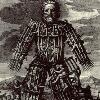 Taking several live favourites from their recent tour and re-recording them in the studio, the Pink Dots have produced one of their greatest singles so far – especially the evocative Wicker Man print on the cover. “Hellsville ’98” is a faster version of the storming track from Crushed Velvet Apocalype, descending into a fit of sampled laughter, while “Abracadabra zzzz” is a fair remix of the bass-heavy track from this year’s Nemesis Online album.
Taking several live favourites from their recent tour and re-recording them in the studio, the Pink Dots have produced one of their greatest singles so far – especially the evocative Wicker Man print on the cover. “Hellsville ’98” is a faster version of the storming track from Crushed Velvet Apocalype, descending into a fit of sampled laughter, while “Abracadabra zzzz” is a fair remix of the bass-heavy track from this year’s Nemesis Online album.
However, it’s the “Version Sirius” of “City of Needles” which really drops the paranoiac bombshell, improving on the dodgy sound quality of the Live At La Luna video version while retaining the scorching intensity of the first-person tale of a father cajoling his son into a Heaven’s Gate style suicide trip to the stars. As if this wasn’t enough, there’s a blinding interpretation of the epic “Andromeda Suite” (here reduced to a mere eleven minutes), a track apparently lost from the video. Soaring, uplifting, Meta-Space Rock from the heart of the Galaxy, “Andromeda” was always a bit of a slow-burning trip, but here it becomes (eventually) an echoing feast of flute, analogue swirl and rising, ecstatic, glory. Simultaneously (partially) justifying and knocking into a cocked hat any comparisons with Pink Floyd – Hawkwind always seem a better reference point somehow – and even managing to slip in a brief “Imagine” quote, “Andromeda ’98” is the hightlight of an essential Dots release.
-Antron S. Meister-
Legion Of Green Men – Floating In Shallow Water
Label: Swim Format: CD
Opening the album with a concealed 55-second title track of gurgling electronics (press rewind for a bit to find this one), Floating In Shallow Water has “For Maria, Wherever I May Find Her” as the alternate opener, which sets the scene with some digital-sounding wind instrumentation over a chugging breakbeat groove and some sampled vocals which could be described as ethereal in the right circumstances, or warbling in others. From then on in it’s a warmly inviting psychedelic soup of Dub bass, phased guitars, synths and reversed trickery of all kinds, and being from Canada, also very, very reasonable.
Still, it’s not all as Hippyish as titles like “Owls In The Apple Tree,” “A Forest Primeval (Patience Part 1)” or “Demystified Time (& Space)” might indicate. The first of those, for example, while having circling squidgy keyboards around an electronic bass loop like the Ozric Tentacles after a few heavy bongs, also does it so pleasantly that it’s quite beyond harsh criticism. The same applies to the next few tracks too; maybe a few to many surging keyboard harmonies, perhaps the odd arpeggiated FM squiggle make it all a little studio bound to quite gel, but still, they make it all right in the end. The production methods of Lex and Ru are deft enough to override what could be disastrously kitch or maudlin in other hands, as demonstrated in the weary skank of “Constellation” and the underwater pulse beats and extended overtones of “Demystified…”
The two parts of “Patience” are chilled Trip Hoppy ambiences whihc recall the Welsh incarnation of Amon Düül for some reason; but it’s the later peices like “Logarythm Two Point Three” and “Tracing #13” which are more entertaining pieces of electronic stratospherics and sample rewinds respectively. There’s a clever bit of end-engineering with the final track, making for an ultra-subliminal test of the reproducing speakers’ noise threshold (unless the listener is in the habit of listening to music at maximum volume, in which case it won’t be that subtle). Suffice it to say that this album has floatation tank written all over it…
-Freq1C-
Urs Leimgrber – Blue Log: Ten Pieces For Saxophone
Label: For 4 Ears Format: CD
 I recently heard a gig by Peter Br�zmann, a man with a reputation as one of the most abrasive, ferocious saxophonists in Europe, or anywhere for that matter. Throughout his raucous assaults there were often perceptible glimpses of melody, of form. Whichever instrument he used, it was mostly recognisable as a member of the sax family. It was hugely enjoyable.
I recently heard a gig by Peter Br�zmann, a man with a reputation as one of the most abrasive, ferocious saxophonists in Europe, or anywhere for that matter. Throughout his raucous assaults there were often perceptible glimpses of melody, of form. Whichever instrument he used, it was mostly recognisable as a member of the sax family. It was hugely enjoyable.
Urs Leimgrber sometimes takes a more extreme approach. He plays tenor and soprano. They are often both hard to recognise. I was briefly reminded of some of Evan Parker‘s work on the INCUS label in the Seventies. The opening track could have been an electronic soundscape with intermittent drumming, or an abortive attempt at communication using a language our ears have no way of comprehending. Or something else entirely. You can hear the human qualities of one man and sax; the breath, the vibrating of a reed and the combination of flesh and metal. The second track consists of percussive noises and a low moaning. You would be hard-pressed to recognise the familiar instrument. Track four (there are no titles) starts with a fairly high pitched sustained note and could also be misheard as a piece of electronic noise.
Elsewhere he sounds like he’s playing the buzz-saw with a damaged reed or even occasionally, a flute. The final track could be three instruments simultaneously ; a didgeridoo mumbling beneath ululating soprano with tuned drums pattering in and out of the mix. He is intent on finding new ways to test the limits of his instruments and at times it is hard to follow. Then there is a piece like track 5, a controlled melancholy journey with clear and shapely lines to follow as they swirl and writhe. It would sound great in a crumbling gothic pile at sunset. Desolate but strangely beautiful music.
-Paul Donnelly-
Lengsel – Solace: Covering Calm Distortion
Label: Solid State Format: CD
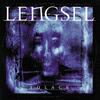 Here we have it – the first Norwegian Progressive Black Metal band on a Christian label! Well, Celtic Frost and Bathory (the kings of Black Metal) were never Satanists and neither are Lengsel and the Black in their case signifies melancholy rather than allegiance to the horned one.
Here we have it – the first Norwegian Progressive Black Metal band on a Christian label! Well, Celtic Frost and Bathory (the kings of Black Metal) were never Satanists and neither are Lengsel and the Black in their case signifies melancholy rather than allegiance to the horned one.
The first thing that struck me was: “Hey, they have produced this themselves”. I checked the CD booklet, and yes Lengsel were the producers. Big mistake. This being their first album they would have gained a lot by getting someone to lead them a bit. The sound suffers as a result – sometimes it’s cluttered, sometimes some ideas just don’t work, and while there are plenty of ideas on this record, it’s just that they are not utilized properly. The guitar sound is a bit flat, the vocals should be more upfront and fierce. But there is plenty of potential here. Lengsel are more than ready to take risks and are truly progressive.
Nylon string guitar work floats in and out of the sound picture in examples of striking ethereal beauty, especially on “Hours”. There is a somewhat clumsy use of piano and keyboards on occasion, but hey,when it works, it works, like on “Avmakt”. There are many shining moments on this disc, but the overall impression is one of incompleteness and not really satisfaction. The Lengsel boys have plenty of epic riffin’ in them and lots of great ideas, it’s just that they need to direct it in the right way.
-Dag Luterek-
Lesser – Suppressive Acts I-X
Label: Matador Format: CD
You could describe Suppressive Acts I-X as a fusion of Metal and Electronica. The first track, “The Science of Pathology”, is worth a thousand Linkin Bizkits or Sticklebacks … and I’m afraid that I do have to rant on about Metal at this point. Having grown up with Celtic Frost, Bathory, and a whole host of dubious European Death Metal bands I’m always going to think Nu Metal my arse. Slickly produced Pop Metal anthems of teen angst really do nothing for me. I feel more at home when Metal sounds like it could have been recorded in yr dad’s garage. I have fond, if somewhat embarrassing, memories of dodgy Scandinavian Mini-LPs filled with formless amateur noise. And you just knew that the band would be overjoyed if they had more fans than band members. “The Science of Pathology” delivers all this and more.
So much for memory lane, and Nu Metal for that matter. “The Science of Pathology” is very Metal, but the rest is not so very much. Suppressive Acts I-X soon transforms itself into a morass of noisy spikey fuck you ip Hop beats and mangled samples. It’s stretching a point to call this album a fusion of Metal and Electronica though. Imagine a Heavy Metal band bundled into a cement mixer with a handful of samples to keep them company and you’ll have a good feel for “Crushing Your Repulsive Pince-Nez Underfoot”.
It’s the attitude of Metal, and J Doerck‘s Punk roots, that are present in abundance. They are the driving force behind the 50 or so samples that are manipulated and brutalised on this album. And who cares what the album is or isn’t a fusion of anyway? Suppressive Acts I-X, or any album for that matter, ultimately stands or falls based on the quality of the music. Apart from a few hit and miss moments that left me wondering why, this one stands up rather well. Its noisy, it squeals and its got a chip on its shoulder. Then there are the titles, of course. I can’t image the “Young, Dumb, Full Of Come” and “Destroying My Will To Love” or “Ancient Chinese Whack-Off Session” gracing the liner notes of an Autechre album any time soon.
-<ap/>-
LFO – Freak EP
Label: Warp Format: 12″,CDS
Resuming his LFO identity after a seven year gap, Mark Bell‘s latest release fizzes into life in damned fine Electro style with a heart-warmingly robotic announcement of just how that title track is “going to make you freak”. And the words of the electronic aether aren’t wrong; “Freak” bleeps and sooms with a frazzled energy, beats rolling out in a steady stream of delay FX and layered drum machine percussion. Yep, it seems drum machines are back in style – the cut and paste ethos of digital electronica sweapt back in favour of insane application of the keystab and almost visceral churn of 12-bit PCM sounds bashed out with lysergic aplomb in a welter of room-sized echo unit remnants.
“Butterslut” bleeps up a nasty churn to a relentless regurgitating bass throb while the massed hi-hats flicker their spasmodic charms to a never-easeing groove of mechanized grooving: dementia electronica smashing the brutalist Techno step with a perky cheep to ease the intensity. Never ones to spare the arpeggiations and key transpositions, Mr Bell makes the MDMA-centric thud of beat and bleep both sensually electric and almost overwhelmingly unbearable to the point of, well, ecstasy – in the sense of an audible electronic epiphany as much as the more obvious drug-related terms. “Whistle While You Jerk” turns up the level of propulsive mania, shifting gear a few notches to accellerate the spasming rhythms into inhuman degrees of crazy BPMs and destablised Electro bass explosions.
That vocoded warning wasn’t wrong then: the Freak EP does do exactly what it promises..
-Freq1C-
Chris Liebling (and mates) – Audio 07r (I think, or that could be the record label – or alternatively it could be the catalogue number – its hard to tell as the records don’t say much.)
Label: (Uncertain) Format: 12″
Yup, the Techno is just as minimal as the title. If you’ve had a look at Adam Beyer`s Recorded, then familiar names are going to be creeping up from this record: remixes by Thomas Krome, Oliver Ho, James Ruskin, and Andrew Richley. What we have here is sort of Mills-ish – mind-fucking techno dragged backwards through a hedge kicking and screaming. The difference between Chris et al and Bomb20 is rhythm. Bomb20 drown it out behind a wall of distortion – and yes Chris et al can produce some roughness, but its practically all thumping rhythm with some really insistent Techno toons.
Don’t expect big trancey build up; there aren’t any. The closest to a break is the good fooled-ya-didn`t-I backwards bass drum at the end of the bar. Shit-kicking strenuous none-gabba-techno (140-160 bpm range.) In my humble opinion Thomas Krome`s mix is the pick. He’s fairly new to me but rapidly establishing himself as a master of that rare quality – the fucked up funk-techno bulldozer.
– Alaric Pether –
Light Bright Highway – Moon Glory & The Seventh Sun
Label: Two Ohm Hop Format: LP
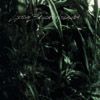 Packaged in a fold-out sleeve of the old school mandala and negative-image whiteout variety, and pressed on lovely white vinyl which references Close Encounters on one inner disc image, Moon Glory & The Seventh Sun is also accurate in its recommendation to “turn volume up” as it is recorded at a very low level. As for “breathing deep,” well that’s a matter of personal choice. Recorded in one forty-eight minute take at 70hz Studios in Texas by David Willingham, (and idiosyncratically not available on CD) this album fits easily into the almost-uniquely American tradition of instrumental Psychedelic albums of the Nineties which includes some stormers from the likes of Cul de Sac, Black Sun Ensemble and Magic Hour
Packaged in a fold-out sleeve of the old school mandala and negative-image whiteout variety, and pressed on lovely white vinyl which references Close Encounters on one inner disc image, Moon Glory & The Seventh Sun is also accurate in its recommendation to “turn volume up” as it is recorded at a very low level. As for “breathing deep,” well that’s a matter of personal choice. Recorded in one forty-eight minute take at 70hz Studios in Texas by David Willingham, (and idiosyncratically not available on CD) this album fits easily into the almost-uniquely American tradition of instrumental Psychedelic albums of the Nineties which includes some stormers from the likes of Cul de Sac, Black Sun Ensemble and Magic Hour
Expansive and evoking almost hallucinatory concentration, the guitar/drums/bass trio of Robbie Dwyre Jr., Trinidad Leal and Curt Christensonachieve a seemingly effortless feeling of anti-gravity at times, with excursions off into heads-down to the pedals, soaring stratospherics, though also thankfully free of grandstanding or guitar solo histrionics. The break between sides/parts one and two comes quite naturally too, with effects feedback providing a suitable break point, a pause for breath before the gradual uphill climb into sweeping guitar slides, heart-stretching major chord filigrees and the outgoing flow into phased/flanged feedback conclusion.
Unpretentious and obviously recorded with both feeling and extensive knowledge of when to exercise restraint, Moon Glory… satisfies those parts which require a pleasurably intense listen, whether contemplative or idly daydreaming on a landscape. Ambling along a fine edge between purposeful meander and shimmering effects-pedal exploration, it’s a definite headtrip into the eternal possibilities of what remains an evocative form in the right hands.
-Linus Tossio-
Lightning Bolt – Hypermagic Mountain
Label: Load Format: CD,LP
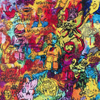 Heard the shite joke about the remaining Beatles reforming to do a new album? It’s mostly drum’n’bass. Yeah, I’ll get me coat.
Heard the shite joke about the remaining Beatles reforming to do a new album? It’s mostly drum’n’bass. Yeah, I’ll get me coat.
Rhythm sections, though. They get a bit of a raw deal. Hands up who, apart from the litigious Morrissey, can remember exactly which out of Andy Rourke and Mike Joyce played the drums and which the bass? Okay, some of you probably can, but you see my point. To be a famous bassist in Rock you really have to be Flea or Lemmy. Lemmy’s probably of most relevance here, to be honest.
Lightning Bolt are essentially a rhythm section. A very fast, very loud one. Sounding at times like police sirens and at others like a Free-Jazz Stooges, they’re impossible to ignore. If you want a crap metaphor, then get the fuck ready. ROCK is a train. A big, fast, noisy train. Probably to NOWHERE. Probably just going there for KICKS, cos the driver’s all HOPPED UP ON GOOFBALLS. Or possibly going there to FUCK SHIT UP. You, dear reader, are locked in the engine room of ROCK, with nothing to hold onto but some hefty riffs, and even they aren’t staying in one place for long. Try to detach yourself from the moment, however briefly- try to look beyond the broken limbs, the bloodied nose and the caved-in skull, and listen- through the bleeding eardrums. What can you hear?
Why, Hypermagic Mountain by Lightning Bolt, obviously. There’s no fighting it. As wonderfully chaotic as early Pussy Galore, Hypermagic Mountain is filled with insane levels of drums and bass, although you’d be more likely to fight to it than dance to it. Song titles flash by- “2Morrow Morrow Land” (presumably a Mad Max reference), “Captain Caveman”… I have no idea what any of it means, but it all seems strangely appropriate.
If you want noise, but you’re getting a little bored of power electronics and want something that goes right back to the roots of Rock and Roll, pulls them out of the ground screaming like mandrakes, mixes them with crack and smokes them in an enormous bong made from the skulls of its enemies, then this is it. Words can’t do Hypermagic Mountain justice. Although if they could, they’d be onomatopaeic words. Stuff like “bang”, “screech” and “duggadugaURGGGGHHHH!!!” (Okay, I made that last one up). Just get it.
-Deuteronemu 90210 very fast and very loud-
Lightning Bolt – Ride The Skies
Label: Load Format: CD,LP
 Now this is what I think of when I think of free jazz, or maybe free rock would be a better term, since it’s a rock band lineup of electric guitars, bass, and drums? Total cacophony with a purpose, apparently without structure but all the instruments fall together at just the right moments before running away from each other again. Just amazing ideas behind the songs, too – track two, “Saint Jacques,” repeats what sounds like the opening riffs of a song about forty times, as if about to break into some monster rock song but instead falling into the opening chords of some children’s song I can’t place.
Now this is what I think of when I think of free jazz, or maybe free rock would be a better term, since it’s a rock band lineup of electric guitars, bass, and drums? Total cacophony with a purpose, apparently without structure but all the instruments fall together at just the right moments before running away from each other again. Just amazing ideas behind the songs, too – track two, “Saint Jacques,” repeats what sounds like the opening riffs of a song about forty times, as if about to break into some monster rock song but instead falling into the opening chords of some children’s song I can’t place.
“!3 Monsters” could be interpreted as heavy on the drum solos, but even the areas where it’s almost all percussion, there’s just so much going on that it sounds full enough to disguise itself as a full song. “Into the Mist 2” is disturbing in its disorder, loaded with feedback and amazing percussives (really, throughout this album, the percussion is just spectacular) while “Wee Ones Parade” invokes mental images of monkeys being tortured by guitars and kazoos. All in all, just a wonderful, chaotic, noisy, angry piece of work, great for turning up loud and scaring the shit out of your neighbors with (yeah, I know – I hate ending sentences with prepositions just as much as you hate reading them).
-Holly Day-
Like A Tim – I Like It If You Don’t Like It
Label: Geist Format: CDS, 12″
Tim van Leijden likes his old-fashioned drum machines to work their Electro socks off. Like a touched descendant of Front 242‘s mechanical beat productions, he works them up into a frenzty of programming, before dropping a sly melodic hook of the most lateral kind. “1997” (and its trundling reprise “1998”) typifies this approach, with a chugging undertow transposing itself into oblivion which a comatose sequence works its way into a confused state, taking the listeners along too, while “Snel” plays noisy havoc with a bossanova preset.
With some kind of retro Old Skool HipHop revival being promoted these days, there’s much that the new DJs on that particular block could do to learn from their forebears – the art of rhythmic deconstruction being one that van Leijden has obviously imbibed as demonstrated by the curiously discordant toytown tune “Don’t Drink and Drum.” In case anyone hadn’t noticed his tongue stuck firmly in cheek, the following “We Are So Avant-Garde (Snow Walking)” thumbs its nose (an ungainly position), layering scratched vinyl samples with a piss-take minimalism. After which, Speedy J‘s breakbeat techno remix of “The Everlasting Manufacturing of Synthi’s” comes across as an almost- reutrn to normality, with its fragmented speech-synths and cascading drum patterns gradually descending into a digital morass.
-Freq1C-
DJ Linus – Soul Penetration
Label: Compose Format: 12″
Well, he didn`t penetrate my soul – I don`t recomend DJ Linus. I don`t give a flying fuck if he`s on Armand Van Helden‘s playlists, “Soul Penetration” is an appaling track. The “Worldleague” is initially promising, until the realisation strikes home that it’s generic Techno thats been done a million times before. “Rollercoaster” is fun in a Disco kind of way and it’s the only redeeming feature of what would otherwise have been a coffee-mat ashtray slab of vinyl. Basically, the other two tracks should have been binned; I would have preferred it if Rollercoaster had been acompanied by lots of ungrooved blank vinyl.
Ugghh.
-Alaric Pether-
Liquid Sphere – Liquid Sphere
Label: Liquid Sphere Format: CD
Throbing with the harsh beat of deeply bassy beats and marching to the metronome of minimal Techno, Liquid Sphere makes a convincingly hardcore noise, taking in acid 303 lines among the rattling drum machine counter-rhythms. There’s a brooding build up of tension that comes straight from the DJ booth – ominous hihat snap, sparse beat and synth pulse, then an (almost, in this case) ecstatic rush of all the elements in concert.
However, this all takes time on the CD – not just a case of one track followed by another in the same mould, but a gradual incremented meander through some pulsing grooves before the whole thing starts to kick in around the rewound squarks and analogue bashes of “Stow2”. Even then, there’s plenty of build up left – the circling samples and low moans of “Original Ground” keep the mood restrained, as do “Two Faces'” and “Solid Clouds'” shaken synths and purring, bassy overtones – as do the Moroder-style monosynth lines of “Atom Of Sense,” which is where some real forward motion starts to accrue.
It’s around the torn-bass slabs of “Plaster” that the dysfunctional breaks tale hold, making up a quite threatening collage of elements which is only let down by the obvious drum machine hihats – though they continue over into “Mutual Destruction,” it’s also here that the real pounding beat begins, that unstoppable heart-attack of layered drums – and the album really heads for take-off. Even so, it becomes apparent that it’s not been the primary focus of Liquid Sphere – there’s more concern with texture than might have been apparent at first, though that slightly distorted basskick retains its primal gravitational pull. For all the Techno trappings, this album makes for good home listening, combining enough variation to overcome the restriction of more dancefloor-oriented tracks, and quite capable of setting the pulse racing in its own right.
-Freq1C-
Listing Ship – Dance Class Revolution
Label: A True Classical CD /Transparency Format: CD
The immediate commonality between all these latest Transparency/A True Classical CD/ Fal�ta-Galia CDs is how well they are recorded. Clean clean clean. Los Angeles combo Listing Ship (formerly Leather Hyman) birth a series of dark red songs stained with water and prickly like Little Otik, the hungry wooden baby from Jan Svankmajer‘s recent magnum .44 opus.
And yet we issue these little records with so much heart and soul and mind to them, like messages in a bottle through which we ve just drunk away our sorrows – and will all 500 copies or so find their audience? Eventually, ultimately? This is the faraway promise of modern music. That your feelings will somehow mesh and enfold the feelings of someone else, or perhaps several someone elses .
Listing Ship sing into the probable void with all confidence about all things great and small and beauteous, moving like the female Red Chinese soldiers who grace the disc insert, with aplomb and panache and fortitude enough to keep any vessel afloat.
-David Cotner-
Lithops – Didot
Label: Eat Raw Format: LP
Jan Werner’s second solo album as Lithops is a distillation of the techniques perfected by Werner both with Andi Toma in Mouse on Mars and with Markus Popp in Microstoria. The signatures of both groups are evident in the cycling procession of liquid blips, skittering drum loops and heaving bass of the former, and the hypertrophied soundscapes of the latter; sometimes separately, sometimes together. Slow-burning sample schemes give way to the energetic, convoluted breaks, but however inventive the material presented (such as the distorted blare of bagpipes on one untitled track), there is a nagging, entropic anti-dynamic which stifles the moments of genius. The absence of collaborators seems to have resulted in less freedom, not more, making for a sketchy (if nevertheless enjoyable) album which occasionally displays the full depth of its creator’s undoubted talents.
-Antron S. Meister-
Live Human – Elefish Jellyphant
Label: Matador Records Format: CD
 Live Human‘s Elefish Jellphant is an awesome cross-pollination of sampled noises and live music resulting in something that falls somewhere between Free Jazz and Trip Hop. They’re far from being the first band to combine elements as diverse as dialogue snips and scratching with upright bass (K Records’ ICU is another band that does wonderful things with the combination), but originality isn’t the issue here. The percussionist, Albert Mathias is more than adept at the variety of traditional drums played here, including North Indian percussive instruments and hand drums, making for some unique backbeat tracks that keep this far from the usual Trip Hop collective of repetitive drum machine samples, while double bass player Andrew Kushin and DJ Quest (Carlos Aguilar) fill in the spaces with enough beautiful and interesting sounds to confuse, perplex, and delight even the most creative of club kids.
Live Human‘s Elefish Jellphant is an awesome cross-pollination of sampled noises and live music resulting in something that falls somewhere between Free Jazz and Trip Hop. They’re far from being the first band to combine elements as diverse as dialogue snips and scratching with upright bass (K Records’ ICU is another band that does wonderful things with the combination), but originality isn’t the issue here. The percussionist, Albert Mathias is more than adept at the variety of traditional drums played here, including North Indian percussive instruments and hand drums, making for some unique backbeat tracks that keep this far from the usual Trip Hop collective of repetitive drum machine samples, while double bass player Andrew Kushin and DJ Quest (Carlos Aguilar) fill in the spaces with enough beautiful and interesting sounds to confuse, perplex, and delight even the most creative of club kids.
-Holly Day-
The Locust – Plague Soundscapes
Label: Anti Format: CD
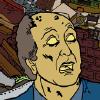 Short sharp shock music, spasmolytically lurching on the ground-out Rock gtr-bs-dr format, but with the gurning gurgle of electronics added to the shrieking Grindcore melange, Plague Soundscapes sets itself up as a speed-freak attack on the senses, and it has to be said, analogue synths do go really rather well with the penny-turned jerk of vocals spat out as ectoplasm in barely minute-breaching tracks with great titles like “Anything Jesus Does, I Can Do Better”, “Earwax Halo Manufactured For The Champion In All Of Us” and “File Under ‘Softcore Seizures'”. A film using “Twenty-three Lubed-up Schizophrenics With Delusions of Grandeur” as a soundtrack is available to watch at New Eye Films, while the video for “The Half-eaten Sausage Would Like To See You In His Office” is included on the CD.
Short sharp shock music, spasmolytically lurching on the ground-out Rock gtr-bs-dr format, but with the gurning gurgle of electronics added to the shrieking Grindcore melange, Plague Soundscapes sets itself up as a speed-freak attack on the senses, and it has to be said, analogue synths do go really rather well with the penny-turned jerk of vocals spat out as ectoplasm in barely minute-breaching tracks with great titles like “Anything Jesus Does, I Can Do Better”, “Earwax Halo Manufactured For The Champion In All Of Us” and “File Under ‘Softcore Seizures'”. A film using “Twenty-three Lubed-up Schizophrenics With Delusions of Grandeur” as a soundtrack is available to watch at New Eye Films, while the video for “The Half-eaten Sausage Would Like To See You In His Office” is included on the CD.
It seems unseemly to go on too long about an album whose longest song is 1:31, so… harsh, jump-cut energy; sudden electronic squitters and fragmentary rest-break loops pounded over in furious pandaemonium, staccato Electro-Punk churn scraped over the still-twitching embers of ENT and Naked City, breakneck chaos battery at 2,000,000 bpm plunged into a vat of boiling synthesis with the odd snatch of Industrial loopiness intruding as “Can We Please Get Another Nail In The Coffin Of Culture Theft”. Extreme volume and home stage-diving recommended.
-Antron S. Meister-
Francisco Lopez – Untitled #92
Label: Mego Format: LP
Released as a form of DJ tool on lovely heavy white vinyl (and it’s very weighty indeed!), Untitled#92 bears the instruction “to be multi-layered with several copies”, those lucky or determined enough to get hold of the recommended four discs can no doubt have a lot of fun playing them out of synch. This, given the slow, crackly loops on each track (there are two on each side) should give a very interesting sound indeed, as the recordings of what seem to be locked grooves (whgich in turn are set into endless loops…) mesh into evolving new pieces, never the same twice except in the hands of a truly exceptional turntablist.
No doubt multiple-play gives the intended dimension to all this sussurus and snicker of platic; but just the one copy reveals some very big sounds under the surface of soon-to-be dusty (for extra noise) vinyl, especially in the low end region when played at massive volume. Listen to those speakers shake!
-Freq1C-
Lolita Storm
– Hot Lips, Wet Pants
– Girls Fucking Shit Up
Label: Digital Hardcore Format: CDS,12″; CD,LP
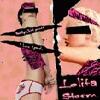 Got your attention boys? Girls go aggressive? Intense understatements of the Century. Lolita Storm smack rough again, assisted by Alec Empire and his race against time mixing techniques. The comparisons are going to come – is “I Luv Speed” too much like Chicks on Speed? (Do all girls in anti-Pop worlds now make their own dresses out of paper?) Well, the DHR girls are going much faster than Chicks with the cheerleaders on drugs thing, but both are delightful in their play-ups by women. It is a nice boost of energy, this shot of oestrogen into the sometimes tiresome world of electronics. Oh, and Lolita Storm definitely comes out on top if you put girl bands against Species. Super quick, loud, and not a bad example for your daughters…
Got your attention boys? Girls go aggressive? Intense understatements of the Century. Lolita Storm smack rough again, assisted by Alec Empire and his race against time mixing techniques. The comparisons are going to come – is “I Luv Speed” too much like Chicks on Speed? (Do all girls in anti-Pop worlds now make their own dresses out of paper?) Well, the DHR girls are going much faster than Chicks with the cheerleaders on drugs thing, but both are delightful in their play-ups by women. It is a nice boost of energy, this shot of oestrogen into the sometimes tiresome world of electronics. Oh, and Lolita Storm definitely comes out on top if you put girl bands against Species. Super quick, loud, and not a bad example for your daughters…
So… Onto the full length album, Girls Fucking Shit Up. Well. Here we have more homages to the benefits of being femme. With lyrics like “She’s not dumb, she knows that guys/ brains are found behind their flies…” it is clear that most of the humour within is at the expense of boys. So what? Really they do deserve it a lot of the time. Still it must be said that the Lolita Storm girls do know how to get the most out of their men as is apparent in the lyrics to “OK Sid”. In fact, reading through all the liner notes and song lyrics, it is obvious that the girls don’t want a world without boys, just one where they can be as loud and swear a lot. I wonder if they fart and burp to mark their territories and squeak their armpits with boyish glee?
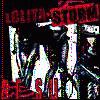 Unfortunately, as entertaining as a read through of GFSU is, the listening is a little bit repetitive, a little bit disappointing. I can personally atest to the absolute fun of seeing Lolita Storm live, but this doesn’t come across so well through the home system, though a little better through the gig video files included on the CD. LS are more of a participation type band, and do go a little flat on CD. Perhaps it would be more fun to listen to in a fast car kind of setting. Kudos for their efforts though, any music so based on energy and good times must be appreciated regardless of gender in a world such as ours where things can get a little too serious.
Unfortunately, as entertaining as a read through of GFSU is, the listening is a little bit repetitive, a little bit disappointing. I can personally atest to the absolute fun of seeing Lolita Storm live, but this doesn’t come across so well through the home system, though a little better through the gig video files included on the CD. LS are more of a participation type band, and do go a little flat on CD. Perhaps it would be more fun to listen to in a fast car kind of setting. Kudos for their efforts though, any music so based on energy and good times must be appreciated regardless of gender in a world such as ours where things can get a little too serious.
-Lilly Novak-
Lolita Storm – Red Hot Riding Hood
Label: Digital Hardcore Format: CDS,7″
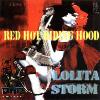 Time for more Digital Hardcore action with ver Storm, who continue to occupy that vague (and previously unimagined) middle ground between Crass and Shampoo. “Red Hot Riding Hood”, behind cover artwork featuring a chick with a big fuck-off gun, is kind of like Marmalade Atkins for the Apocalypse, or My Naughty Little Sister taking a blowtorch to Bad Harry‘s genitals. With Drum and Bass, and a video (included on the CD) of hilarious juvenile delinquent obscenity as a bonus.
Time for more Digital Hardcore action with ver Storm, who continue to occupy that vague (and previously unimagined) middle ground between Crass and Shampoo. “Red Hot Riding Hood”, behind cover artwork featuring a chick with a big fuck-off gun, is kind of like Marmalade Atkins for the Apocalypse, or My Naughty Little Sister taking a blowtorch to Bad Harry‘s genitals. With Drum and Bass, and a video (included on the CD) of hilarious juvenile delinquent obscenity as a bonus.
There’s no hardline DHR manifesto this time, just pure unadulterated bubblegum Pop done louder and faster. There are even (for fuck’s sake) harmonies on it. And a great line about Betty Boo. Kind of “Chicks on Crack”, or The Ronettes kicking the shit out of the Jesus & Mary Chain during a Drum`n`Bass party in a factory that builds really big and dangerous stuff for terrorists. And of course, it’s loads of fun, ‘cos underneath that grim urban revolutionary DHR front, there’s always been the understanding that mayhem’s just pointless if you can`t enjoy it. In an ideal world, Lolita Storm would be on Top of the Pops every week. And beer would be much cheaper. The Lolitas and Cobra Killer would be kidnapping Britney and shaving her head before getting really pissed and fucking shit up.
As wonderful pop moments go, it’s “Teenage Kicks”, “Wild In The Country” and “Blues From A Gun” all rolled into one, only different from all of `em. And there`s more! Track two, “Boy”, is another fucked up Drum`n`Bass Phil Spector shoutathon, complete with “ooo-oooh” backing vocals and stuff. And “I Love You So Much” even starts with an intro which would have worked on “Leader of the Pack” if it had been co-written by Valerie Solanis and Jeffrey Dahmer – “Is that Jimmy’s leg you`re eating?” A touching little ditty replete with music-box chorus and cannibalism, as well as a constant pulsing that gives the whole thing a kind of Throbbing Gristle ambience, and loads of background noise. Sheer fucking genius.
And the big bad wolf? Well, he can fuck right off.
-Deuteronemu 90210, El Orso Hormiguero-
Lolita Storm – Sick Slits EP
Label: DHR Fatal Format: CDS,12″
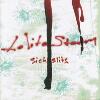 This is the EP the Spice Girls never made. Imagine Alec Empire, Shampoo, and Kathy Acker teaming up for some collaborative work. Sick Slits is that recording. Furious Junglist loops fight against bouncy power Pop vocals. There isn`t a trace of sugar coating anywhere to be seen, though. The dark underbelly of Pop music doesn`t have a sugar coating. Lolita Storm deliver their message with corrosive acid, and just a little touch of saccharine to keep up the levels of Pop. This is an EP packed with good sing-a-long numbers like the chorus to “Suzy”: “Wheres the cunt who killed my baby!!!”
This is the EP the Spice Girls never made. Imagine Alec Empire, Shampoo, and Kathy Acker teaming up for some collaborative work. Sick Slits is that recording. Furious Junglist loops fight against bouncy power Pop vocals. There isn`t a trace of sugar coating anywhere to be seen, though. The dark underbelly of Pop music doesn`t have a sugar coating. Lolita Storm deliver their message with corrosive acid, and just a little touch of saccharine to keep up the levels of Pop. This is an EP packed with good sing-a-long numbers like the chorus to “Suzy”: “Wheres the cunt who killed my baby!!!”
Each track tells the twisted story of its protagonist. “Omelda” is a tale about a Thalidomide girl in a residential hospital who is sexually abused by her doctor but still believes herself in love with him. “Suzy” is abducted and murdered and “Annabelle” has everything but is still unhappy. As the blurb says: “the six songs on this EP are sad and moving tales about tragic. Stories we can all live and learn from …” and jump about about and go fucking wild to at the same time.
Sick Slits deserves to occupy the number one spot.
-ap-
The Love Grocer – Rocking With The…
Label: Dubhead Format: CD
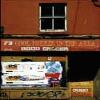 Heavy on the brass section of The Crispy Horns, Rocking With The Love Grocer edges along a fine line between blissed-out and repetetively pleasant but obvious, slipping down so easily as to be perfect smoochy backdrop or a chilled-out, smokably mellow pipe and slippers accompaniment. In other words, it’s really, really nice, with all the restricted bandwidth of appreciation that teachers inculcate on the use of that particular adjective.
Heavy on the brass section of The Crispy Horns, Rocking With The Love Grocer edges along a fine line between blissed-out and repetetively pleasant but obvious, slipping down so easily as to be perfect smoochy backdrop or a chilled-out, smokably mellow pipe and slippers accompaniment. In other words, it’s really, really nice, with all the restricted bandwidth of appreciation that teachers inculcate on the use of that particular adjective.
Actually, once the tendency towards dismissal of the record’s considerable charms has been overcome, it becomes apparent that there is much more than easily-digestible recycled Dub styling going on here. The Mexican feel to the brass gets pretty mournful, and the emotional content leeches itself into the chest cavity on a finely-tuned bass and percussion basis after a time. That and the production tricks (some courtesy of the redoubtable Dougie Wardrop) which bring layers of instrumentation across each other, muted trumpets to not too bad sax lines and all. Actually, those last can get a bit too smooth and smokey, especially when there’s an electric piano or organ to smarm away underneath, bringing a kitschy Reggae-lite feel to proceedings.
Provided it’s accepted on it’s own terms then, Rocking With The Love Grocer stands up well about eighty percent of the time, and steps those Reggae rhythms firmly enough, with aplomb even. Not just nice after all, but frequently cool in all the meanings of that term too.
-Linus Tossio-
Low – Secret Name
Label: Tugboat Format: CD,LP
Low‘s new album represents the maturing of one of post-rock’s most interesting bands. To say that this is a lighter album than many of their more Joy Division-esque outings is not to say that this is a lightweight or frivolous affair. Instead what we get is Low’s focussed melancholy, their refined and minimal yet dense soundscaping reaching some sort of creative plateau.
The precision with which Alan Sparhawk hangs each note onto Mimi Parker‘s frighteningly sparse percussion is underpinned by Zak Sally‘s simple yet effective bass phrasing and the whole thing is given the trademark Steve Albini treatment. The barest guitar textures are imbued with a crystal freshness and the percussion is carefully and accurately observed. Parker and Sparhawk’s twin vocal harmonies are given the space to breathe in the rich atmosphere which their songs inhabit. The band are joined on a number of tracks by The Triple A Strings (Ida Pearle, Tresa Ellickson and Kira) who reinforce the harmonic pallet of the band. Nothing excessive. On previous albums it was possible to imagine a phantom string section supporting the three piece so the sextet work as a unit wonderfully.
Moving on to the actual tracks we find low combining Musique Concrète Electronica (“I Remember” and “Don’t Understand”) with their characteristic avant-Country noir. “Starfire” is a very fine song remeniscent of Galaxie 500 at the height of their powers and the atmospheres conjured up on “Lion/Lamb” where Sparhawk’s piano and vocal lines are consolidated by resonant strings is one of their most compelling compositions. Hell, I liked all of them a lot! And “Missouri” – pronounced “misery” – plays it so straight it made me laugh my arse off!
Am I gushing yet?
-Iotar-
Low – Things We Lost In The Fire
Label: Kranky (North America)/Tugboat (Europe) Format: CD
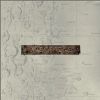 At once, as it is with Low, one knows one is in for a heart rendering as soon as the first track comes on. The Low trio is, as always, masterfull at the art of depression and making everyone feel really sad in such a very thoroughly self-indulgent way that enjoyment is the ultimate achievement. Everything about this CD is beautiful and nearly perfect as to make it all very hard to write about. The production is amazing, striking a balance between being the best enhancement of the magnificent talents of all involved while never being slick or overdone. The musicianship is exquisite. The singing is raw and endearing. The piano and violins and noises and guitars and squeaks and yells are pristine. Low has lost nothing in the fire that pertains to being able to make as nearly perfect of an album as this is. So much so that there is no point in me telling you much more about it. I would really be going on a bit.
At once, as it is with Low, one knows one is in for a heart rendering as soon as the first track comes on. The Low trio is, as always, masterfull at the art of depression and making everyone feel really sad in such a very thoroughly self-indulgent way that enjoyment is the ultimate achievement. Everything about this CD is beautiful and nearly perfect as to make it all very hard to write about. The production is amazing, striking a balance between being the best enhancement of the magnificent talents of all involved while never being slick or overdone. The musicianship is exquisite. The singing is raw and endearing. The piano and violins and noises and guitars and squeaks and yells are pristine. Low has lost nothing in the fire that pertains to being able to make as nearly perfect of an album as this is. So much so that there is no point in me telling you much more about it. I would really be going on a bit.
Do give particular attention to “Lazer Beam” which is my personal favourite, like a gorgeous lullaby of the sweetest order. In fact this is my most favourite song of all time this year. Has any woman ever achieved such idyllic control over her voice as this? This whole album is worthy of all day playing and triumphant wallowing in self-pity and loss and glorious, jubilent, sadness. I cannot imagine the person who would not find something to love about this album, so do treat yourself and get it.
-Lilly Novak-
Low – Things We Lost In The Fire (A Second Opinion)
This is a little more of an upbeat, Poppier-sounding record than one has come to expect from the band that basically invented the oft-mentioned genre of “Slowcore.” It’s still gloomy, moody, slow, and beautifully chill – it’s just a bit faster-paced than Low‘s previous catalogue of somber drones. The tracks on this are more like traditional songs in that there’s more structure to the way they are composed, as some of Low’s earlier stuff almost seemed like non-linear atmospherics with no truly defined beginning, middle, or end, with brilliant lyrics superimposed on the finished product. Much of the material on this album seems more like the lyrics and music were built simultaneously around each other. I’ve always wondered how much influence the frighteningly cold winters in northern Minnesota have had on the way Low sound, as their music always seems to invoke pictures of things frozen in time or place, or tragically on their way to being so.
-Holly Day-
LSD March – Nikutai No Tubomi
Label: Beta-lactam ring Records Format: 2CD
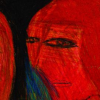 Naming a band after one of Guru Guru‘s more involved freakout tracks hints to what the resulting music might sound like – dense, effects-heavy, and deeply, deeply fried, just like the effects pedals have been battered and bunged into a vat of hot oil. At least that pretty much sums up disc one, which is taken up with nearly forty minutes of psychedelic heaviness in the shape of “Aubade”, roiling and straining at the bounds of musical mania, phasers set to maximum swarm. LSD March brush up a cacophonous sludge which takes its own sweet time developing into an amphetamine monster which wriggles fitfully while developing of the eventual release into mind-bending riffology. The resulting churn keeps the momentum pulsing with speedfreak intensity, and listening to it for the full length can have an uncanny abilty to cause synaesthetic strobes to flicker at sympathetic frequencies in the mind’s eye of the listener who sticks through what is quite probably something of an endurance test for those uncomfortable with delving deep into the thrashing groove they pull through the typhoon of noise. Everyone else can bathe in the delerious whirr until the inevitable prolonged heat-death of all long-form wigout tracks, and then attempt recovery afterwards , or proceed to the rest of the album for at least an approximate semblance of soothing melody.
Naming a band after one of Guru Guru‘s more involved freakout tracks hints to what the resulting music might sound like – dense, effects-heavy, and deeply, deeply fried, just like the effects pedals have been battered and bunged into a vat of hot oil. At least that pretty much sums up disc one, which is taken up with nearly forty minutes of psychedelic heaviness in the shape of “Aubade”, roiling and straining at the bounds of musical mania, phasers set to maximum swarm. LSD March brush up a cacophonous sludge which takes its own sweet time developing into an amphetamine monster which wriggles fitfully while developing of the eventual release into mind-bending riffology. The resulting churn keeps the momentum pulsing with speedfreak intensity, and listening to it for the full length can have an uncanny abilty to cause synaesthetic strobes to flicker at sympathetic frequencies in the mind’s eye of the listener who sticks through what is quite probably something of an endurance test for those uncomfortable with delving deep into the thrashing groove they pull through the typhoon of noise. Everyone else can bathe in the delerious whirr until the inevitable prolonged heat-death of all long-form wigout tracks, and then attempt recovery afterwards , or proceed to the rest of the album for at least an approximate semblance of soothing melody.
The second disc reverses the usual trend for putting all the shorter pieces on the first record, and leaving the mashup for a finale. Instead CD2 opens gently with the chiming invocation and rimshots of the title track before scraping strings introduce a note (or three) of dissonance in “Elephant”, which explores some of the same disconcerting irritation value as Nurse With Wound have bent opened minds with in collaboration with Aranos, a theme which LSD March expand upon later in the crepitating tonescape of “Dance”. By way of reed extemporisations, percussive strata and occasional vocal insertions, the group weave and meander their own beguilingly spare way into the realms of hallucinatory meditation music. That is until “Love” throws up stuttering analogue rhythms which spin out into degenerating electronic grooves and inpenetrably-distorted space voices, and while it’s a mite facile to bring Ghost into the frame of reference, they probably needs to be mentioned, just for comparison purposes, as the droning, cymbal-scoring and chants of “1978” also indicate – though LSD March have a distinct, equally diverse, sound in their own right.
The album concludes in fine miscreant style, rattling and rolling out in a free-for-all miasma of noise making atonality, a punctuation which stands up better for the more lysergically benevolent shifts and twists which have proceeded it into the aether. Nikutai No Tubomi does what good psychedlic music should – it provokes headscratching puzzlement, occasional bursts of dislocating wobbliness (often simultaneously), and allows the music to reach out into spaces where the listener can become lost in the musicans’ own particular trip at the time of recording, but without the pesky intrusions of ego acting as stumbling blocks along the way.
-Linus Tossio-
Roger van Lunteren – Tmaeins
Label: Heimelektro Ulm Format: LP,CD
 Opting for some quite nicely descriptive track titles; “Float” – which is oddly urgent in its ambience, scattered with non-sequiter voice samples; “Watery”, with some pumping washes of analogue spray hinting at something other than the usual association of water with calm, and “Cryptic” – which is that, and convoluted in its development of clicks, pops and shuffled beats along the way. It’s this last piece which shows Roger van Lunteren‘s closest associations with his fellow Cologne residents (though he hails originally from The Netherlands), though there’s something of the distracted technological ramblings of Detroit’s more reflective producers in there too. It’s also quite subtle in its structure, and both easlily digested and enjoyed while passing through.
Opting for some quite nicely descriptive track titles; “Float” – which is oddly urgent in its ambience, scattered with non-sequiter voice samples; “Watery”, with some pumping washes of analogue spray hinting at something other than the usual association of water with calm, and “Cryptic” – which is that, and convoluted in its development of clicks, pops and shuffled beats along the way. It’s this last piece which shows Roger van Lunteren‘s closest associations with his fellow Cologne residents (though he hails originally from The Netherlands), though there’s something of the distracted technological ramblings of Detroit’s more reflective producers in there too. It’s also quite subtle in its structure, and both easlily digested and enjoyed while passing through.
Tmaeins is far from a one-trick record though; the brushed-Jazz strokes of “Sil” don’t take off into the clichéd realms of smugness and lounging drawls – they soar instead, flicking here and there into blissed-out grooves, with stretchy strings and some messing around with the breakbeats after a while to sine-wave coasting effect. Quite muso, yes, but none the worse for that – which makes a change – and also gently affecting rather than affected. “Path” is the most active piece, clipping along at a rate of knots before switching into beatless swirls – just like the hands in the air breaks floorfillers everywhere still cling to (and with good funtional dancefloor reason) – before kicking out some phased Electro synthesizing jams.
However, it could all have been so much more over-produced, and suffered muchly in the process – the aforementioned keyboard sweeps and bleeps actually feel like the rush of a teeming dancefloor should: wavey, off kilter, fuzzy, blurred. The bass and drums don’t take all the load of the track either, just for a change – it’s all so much more refracted than that, and good to hear the treble and mid-range get some slack on occasion.
-Freq1C-
Roger van Lunteren – Tmaeins (A Second Opinion)
What do you say to an analogue synth loving aficionado of Eighties music who makes 37 minute long epics? In the case of Roger Van Lunteren the answer is ‘make another album.’ Tmæins was originally released back in 1999. The tracks were trimmed, the album was only released in the USA and Germany and was hard to find there, but that didn’t stop him starting to make a name for himself. Back then NME described it as “a mini-album with maximum thrills.”
Two years later and Heimelektro Ulm have re-released Tmæins. This time around it is no longer a mini-album, reappearing on CD in super extended form. The track “Float” is now restored to its 37-minute glory. The music is electronic, without a doubt, but there is no one style that can be easily pinned on Van Lunteren. In turns he creates distant scratchy HipHop beats, clean and precise Trance, experimental soundscapes, and analogue powered ambience. This is part of what makes Tmæins such a good album.
Right now he is working on a new album together with his friend Olaf Dettinger to be released in 2002. About time too.
-ap-
Lustmord – Metavoid
Label: Next Era Format: CD
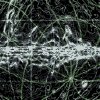 A cold pervades, hanging over the day no matter how deep the sunlight. Beams of light freeze and shatter to the ground as in this release there are voices but from where? Is an atmospheric piece of music affected by the seeming intrusion of a voice? And is the situation of “atmospheric” or “soundscape” music suffused with the implication of “escape”? Of stepping outside oneself, of subsuming into a stretch of sound and reviling the relived life? Steps make their way toward the speakers – a painting of a man walking toward a house that comes closer on each re-examination of the scene.
A cold pervades, hanging over the day no matter how deep the sunlight. Beams of light freeze and shatter to the ground as in this release there are voices but from where? Is an atmospheric piece of music affected by the seeming intrusion of a voice? And is the situation of “atmospheric” or “soundscape” music suffused with the implication of “escape”? Of stepping outside oneself, of subsuming into a stretch of sound and reviling the relived life? Steps make their way toward the speakers – a painting of a man walking toward a house that comes closer on each re-examination of the scene.
At times, the feeling of Japanese or Italian cinema pervades. It haunts the pulses and tones and hollow halls and scraping that rise like monolith monsters from the silvery disc spinning so very quickly. The wind through a reed disperses into the larger breeze and reverberation and the feeling that something is coming, comes nearer… The sound of the wounded animals don’t ring entirely true and where is the call sold for hunting humans?
It is not for nothing that the word “film” holds multiple meanings. More often than not, it is a thing that covers the eyes for changes in perception…
-David Cotner-
Lustmord – Other
Label: Hydrahead Format: CD
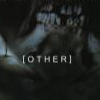 Other is sinister listening. Huge intimidating drones. That’s what Lustmord does very well, and he doesn’t fail to deliver here. At the risk of upping Freq’s carbon footprint, I like to listen to CDs as I drive around. I put Other on. It was dark … it had to be. The world outside was transformed into a wasteland. Most likely post-apocalyptic. Huge empty and desolate. Other is an immensely atmospheric album, but its an atmosphere that will have you cowering in the corner.
Other is sinister listening. Huge intimidating drones. That’s what Lustmord does very well, and he doesn’t fail to deliver here. At the risk of upping Freq’s carbon footprint, I like to listen to CDs as I drive around. I put Other on. It was dark … it had to be. The world outside was transformed into a wasteland. Most likely post-apocalyptic. Huge empty and desolate. Other is an immensely atmospheric album, but its an atmosphere that will have you cowering in the corner.
Lustmord has a long and impressive musical history, starting in 1980, working with industrial legends such as Nurse With Wound, Current 93, and Coil. He was a member of SPK. His 1990 album Heresy gave birth to dark ambiance. He has scored numerous films. Not to mention performing at a ritual of The Church of Satan.
Other features appearances from Adam Jones (Tool), Aaron Turner (Isis), and Buzz Osborne (Melvins), all to good effect. This isn’t the first industrial/drone/metal collaboration I’ve heard. There is something quite logical and right about the crossover, really. This is what industrial metal always ought to have been, not lamer thrash with a drum machine. On Other drone metal teams up with industrial ambiance to give us all nightmares.
-A228-
Lustmord – Purifying Fire
Label: Soleilmoon Format: CD
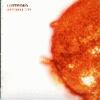 Purifying Fire is a collection of six unreleased tracks by Lustmord. Recorded originally between 1995-98, and with some new material mixed in, Purifying Fire seems a must for the Lustmord collector. I don’t know any personally, but I am sure they must be out there and wanting this new collection.
Purifying Fire is a collection of six unreleased tracks by Lustmord. Recorded originally between 1995-98, and with some new material mixed in, Purifying Fire seems a must for the Lustmord collector. I don’t know any personally, but I am sure they must be out there and wanting this new collection.
I will have to take a look at this, or a listen as is more appropriate, from the point of ignorance, and just as a CD of its own merit and not withstanding the past. What I hear from the beginning is deeply resonant soundscaping with booming low end and frothy airy overlays. Atmospheric music of the highest order which makes me want to sit around and dream up a film show to go with the predicted score. The feeling of the spacey top side is soft, but heavy all the same, with a spine-tingly sort of horror movie anticipation mood. Maybe a show about being trapped deep in the ocean with one’s own bad dream boogeymen, or lost in space and knowing it. Maybe a wounded man’s blind thoughts as he lays dying on some battlefield, no hope, just the awareness of continuous bombing. All the movements are slow and drawn out, there is a sound of muffled breathing, distant passing vehicles, a haunting, and that bomb-drop sound. It is all really very disturbing, but sumptuous in some way at the same time. Can the growl of evil and the victim`s screaming be lovely? Lustmord might say yes and they do a good job of making it so.
The tension level is maintained with an eerie consistency, and by the fourth piece, “Black Star”, I am hitting the volume level up and up because I think maybe what scares me will comfort me. A devilish roar, a bagpipe of ghouls, distorted chantings of disinterested monks; what does go through the heads of people when they make music that is so deeply disconcerting? Why is it so familiar? I am only listening to a CD, so why do I feel so bothered, at the same time thinking it is really beautiful? “Permafrost” comes up out of the serious hypnotics long enough to explore some other sounds and break up the pendulum swinging repetition. It is still disturbing however, and leads right off into “Of Fire and Ice”, of which “Permafrost” is a re-construct, allegedly. The two bear less in common than any other of the tracks as far as I can tell.
75 minutes after starting this dark listening voyage, I come out of the headphones a little confused and a little worn out, but I do like it all the same. This is maybe like come-down music for the hardest of Death Metal fans, or dreamy black stock for Goths – and perhaps just a good stab at imaginary soundtracking.
-Lilly Novak-
Mel Lyman Family – Birth
Label: Transparency Format: CD
“Unreleased folk masterpiece from January 1970, featuring Mel Lyman, Jim Kweskin, Geoff Muldaur, Maria Muldaur, Jess Benton Lyman, Lisa Kindred and many others.”
Curiosity.
This CD and sleeve smells like cinammon and some other spice, appropriately enough. It’s a bit like opening the window and pulling wide the curtains and realising that one has been inside all day listening to records and it’ s 4:30PM in the springtime and the world has been waiting outside all day listening to itself. Shocking and invigorating. Piano and guitar and the feeling of nomadism and loneliness that is fundamentally at odds with the concept of “family”. It is a very “1970s” recording in that is exceptionally evocative of a time when endings were not certain, the future was constantly in doubt, and the concept of conception – of bringing a child into this world – was a romantic, dangerous and tragic one all at once.
Traditional Folk pieces (carried gently by acoustic guitar and harmonica and some creakiness) such as “River”, “Careless Love”, “He Was a Friend of Mine”, and “The Rain” nestle alongside “I’m So Lonesome I Could Cry” by Hank Williams (counterpoint: “One Day I Was So Sad That The Corners of My Mouth Met And Everyone Thought I Was Whistling” by Bladder Flask) and “People Get Ready” by Curtis Mayfield (languidly and impressively beautified in its interpretation here).
A very reflective and melancholy way to move through time, from a faded time that still lives somewhere…
-David Cotner-
Zan Lyons – Desolate
Label: Foundry Recordings Format: CD,LP
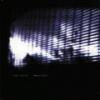 Well, you think you know how it’s all going; what is coming, the whole set up must be rather predictable, and then… Not a shift, but a punch so hard in the aural belly that you jump right out of your cynical skin and sink into some gloomy-ass water. Beautiful and jolting, music not unlike its creator, “Desolate” is the other dark blue.
Well, you think you know how it’s all going; what is coming, the whole set up must be rather predictable, and then… Not a shift, but a punch so hard in the aural belly that you jump right out of your cynical skin and sink into some gloomy-ass water. Beautiful and jolting, music not unlike its creator, “Desolate” is the other dark blue.
Zan Lyons first arrested me with a live performance last year and I have waited anxiously for more since the Warring Factions EP came out. Here it is, and nowhere near as disappointing as seconds usually are. This record is faster and slower. This atmosphere is heavy enough to bring bad dreams – or really good ones, of scary things.
Lyons could be credited with finally answering the big “what’s next?” question which has been echoing out of smokey music halls since the first half of the 1900s rolled over into banal repetition. And this album is no repeat of graveside Bayou twang and bass, but a modern version of what ails us. Complete with the compounded sinister badness that makes up what today brings us down, we are more bitter than our grandparents, more mean than our great-grandparents, overall more self-destructive than previous generations have ever been. We don’t just cry into our Bourbon anymore, we smash the glass and turn it as a weapon on the many lurking enemies, the demons in our TV controlled heads. Our blues are not simple as sadness, but ranging over despair. This music depicts that, the way that 50 years ago, a slide down a steel guitar echoed troubles of then.
Desolate is showing Lyons as a master of electronics, and a composer of the oldest order. His layering is complicated, his rhythms, anti-beats. His saw blade mind must turn inside out to create all this, satisfying, prayer answering noise; soundtrack, song and crash. How very very good of this mild-mannered soft genius to so pleasantly deliver us from musical doldrums. I can barely wait to see his performance of Desolate. Wonder if he’ll bring along Kweku Aacht, who has contributed to this record with words and voice adding yet another element into the works? Remains to be seen, but do get onto Desolate ASAP – music this great is rare, y’know.
-Lilly Novak-
Zan Lyons – Warring Factions
Label: Foundry Recordings Format: CDS
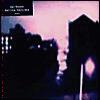 Warring Factions is a quite stunning EP from Zan Lyons, who successfully combines wavering digital keyboard sounds with some quite marvellous speaker-shaking bass oscillations, savaged breakbeats and adulterated percussion patterns. The four untitled tracks are thoroughly engaging examples of just how to produce dynamic interpaly between apparently disparate elements with falling into the trap of banal ambience or pointless cross-fertilisation for its own sake.
Warring Factions is a quite stunning EP from Zan Lyons, who successfully combines wavering digital keyboard sounds with some quite marvellous speaker-shaking bass oscillations, savaged breakbeats and adulterated percussion patterns. The four untitled tracks are thoroughly engaging examples of just how to produce dynamic interpaly between apparently disparate elements with falling into the trap of banal ambience or pointless cross-fertilisation for its own sake.
Each piece builds on the synthetic sub-orchestral movements at first, with the cacophonous drum winding in and out of the mix with consumate precision – what Lyons has acheived here is no mean feat. The emotional contrasts between the searing violin or choral sounds, the undertow of the low end throb and clatter of abrasive beats could quite easily fall into clichéd faux-soundtrack territory, and it’s to his credit that Lyons’ sense of dynamics keep the arrangements at once sparse and intense. The last track combines sounds sourced from bass-guitar enthusiasts Rothko into and around tinkling loops, closing the EP in a gentle glide-down to the more normal planes of existence.
For once the temptation to parcel off this record into genres (Industrial? Downbeat? Post-what?) doesn’t even begin to make sense (if it ever did). Warring Factions simply signals the arrival of a promising talent in the field of tightly-controlled, coiled, energetic music which kicks against the right parts of brain, sternum and knees, quite as capable of moving the whole body as stimulating the more cerebral senses.
-Linus Tossio-

